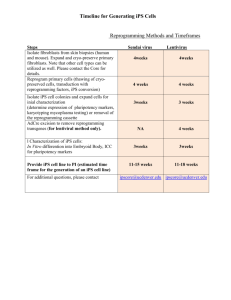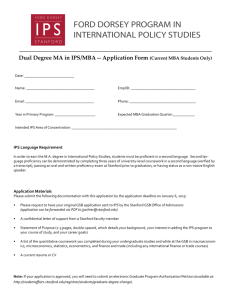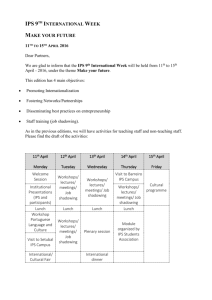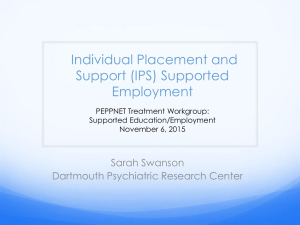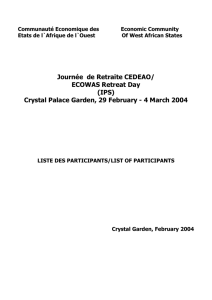melamchi water suply project (mwsp)
advertisement
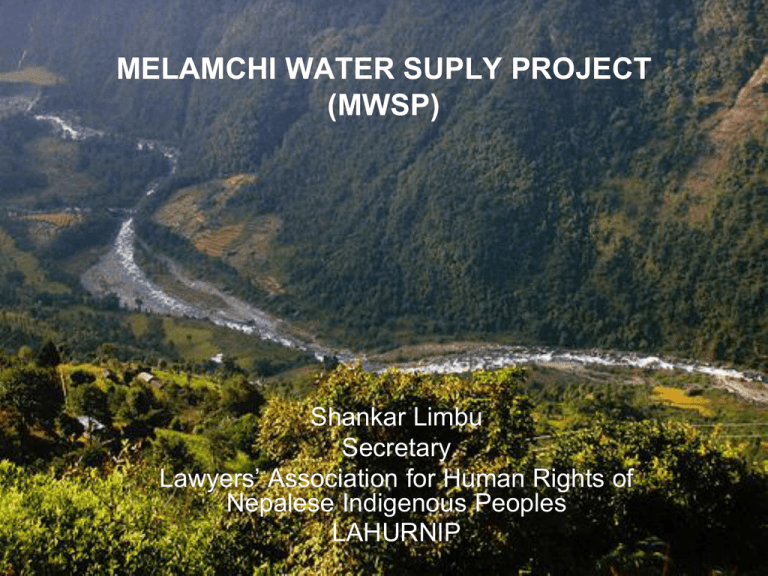
MELAMCHI WATER SUPLY PROJECT (MWSP) Shankar Limbu Secretary Lawyers’ Association for Human Rights of Nepalese Indigenous Peoples LAHURNIP A brief Introduction on MWSP • MWSP is much-debated mega project • Started in 1973 • It is an alternative to address acute water problems of Capital Kathmandu • The Project is located in Sindhupalchok Dirstrict, but covers Kavrepalanchok, Kathmandu, Lalitpur, Bhaktapur • Per day 5100 Million Litters water will be diverted from snow fed Melamchi, Larke and Yangri rivers to KTM • Per day 180 Million Liters water is necessary in KTM • The estimated project cost is US$ 465 million • Donors ( ADB, JBIC, NORAD, SIDA, JG and NG) • ADB is key donor and funding on following components – Construction – Social and Environment – Consultant C o s t E s t im a t io n 25% G o ve rn m e n t o f N e p a l M ix e d C re d it 60% 5% G ra n t Loan 10% Five Project Components • • • • • • Melamchi Diversion Scheme (MDS) Water Treatment Plant (WTP) Bulk Distribution system Distribution Network Waste Water Improvements (WWI) Government of Nepal implemented the project through its line ministry MHPP • Melamchi water supply development committee was established in 1998 Project Objectives • Improve the water-supply in Kathmandu (KTM) Valley • Provide access to clean and safe water supply ensuring good health sanitation • Establish efficient water supply networking system on a sustainable basis • Reduce water pollution through establishment of sewer and waste water treatment plants • To improve river ecology, religious sites, and cultural Ghats located at river banks by augmenting water flow at Bagmatis and its tributaries • To augment the depleting ground water sources of KTM Studies • Bannie and partners UK Identified Melamchy valley the best option technically in 1988 • Stanley and Associates, Canada , carried out preliminary environment assessment 1992 • Snowy Mountains Engneering Corporation of Australia carried out full feasibility study in 1992 concluded Melamchy Valley is the best alternative – technically, environmentally, socially and economically. • EIA based upon earlier studies and investigations funded by NORAD and ADB IPs status in MWSP area • Total population of the nation 27 million • 37.9 percent are IPs (Adivasi Janajati) • Distinct from dominant group (Hindu) who comprise 28 percent of the total population • 14 VDC are identified as affected VDC by MWSP • The project site is traditional homeland of IPs and there population is 56.2 percent out of 58457 • Hyolmo, Tamang, Majhi, Danuwar, Gurung, Newar etc. • Mother tongue users group in project site ( Hyolmo 89.55%, Tamang 59.62, Gurung 6.97) Caste/ Ethnicity Composition Figure 1: Caste/Ethnic Composition of the Study Area Caste/Ethnic group Total Others Dalit Adivasi Janajati caste Group 0 20 40 60 Percentage 80 100 120 IP status in MWSP site • No separate study on IPs • No consultation even though officially shows 14 times it was done • No representation of IPs in Project’s decision making and execution bodies • No consultation, involvement and representation in SUP Planning implementation and monitoring (Local group and • Target group is Local people and Backward People that include IPs • No information provided in the language which they use and no access to information. Impacts (Physical, Social, Economical, Environmental, Cultural, rights Positive impacts • Construction of Access Roads to the sites( Sundarijal, Gyalthum, Sindhu and Abatham 23.6 K.M.) Transportation facility • Spill over employment and daily wages work • EMDP under SUP • Small business increase/ Market • Support to schools, health post etc. • Electrification Negative Impacts • De- recognition of IPs and disregarding exiting ADB Policy and National law • No recognition of IPs’ rights over lands and natural resources • No representation and consultation with IPs • Displace from lands, Sacred site and houses (232 Ha) • Discrimination and arbitrary on compensation of lost lands – Voiceless – Absent of land owners – No land title • Displacement from traditional Occupation (Fishing/ Water mills) due to less residual flow in river • Slope stability endangered – Involuntary displacement – Disposal of spoil from tunnel endangered human and ecological life • No access on employment • Shortage of drinking water and water for irrigation • Promote social conflict and racial haltered (Denial of IPs recognition by other dominant local groups/ preference to Hindu culture, sacred site and religion ) • No information available in local language Public Grievances • No complaint or communication filed from IPs • Water & Energy Users’ Federation –Nepal (NGO) submitted a complaint to the Special Project Facilitator on non-compliance of Policy ( May 1 2004) • Para 4 “There has been a gross denial of the rights and interests of the indigenous peoples who are and will be affected by the project- both directly and Indirectly. The Include the Majhis (Traditional Fishermen /women) and Tamang Communities in Melamchi Valley. • Demand for separate study of the effects on the traditional livelhoods …. Followed by FPIC about their displacement and action plans Special Project Facilitator Response and Recommendation • Extensive discussion with all parties, speed or resolution disputes, implementation of SUP and Capacity building of MWSDB • Secondary Complainants ( Locus Standi) • No evidence of serious or systematic non-compliance of ADB Policies. On contrary, there is substantial evidence of additional effort and dedication being applied by ADB, other donors and MWSDB to ensure not only compliance, but fairness and equity in very difficult and often dangerous working condition. Recommendation • Identity of indigenous peoples must be recognized according to existing national laws and policies • The rights guaranteed under international laws that ratified by Nepal should be duly complied • Separate and independent study on Project impacts to IPs with their involvement • Indigenous peoples/ IPOs representation in MWSPB and its every decision making and executing structure with Identity • Regular consultation with IPs every periodic consultation • Ensure equal access on service and benefit sharing including • Independent experts and IPs study team should be commissioned to mitigate adverse impacts on IPs • Policy of FPIC must be applied and complied • IPS Empowerment program should be launched to mitigate indirect adverse impact and uplift their social, economical, educational, health etc. • Redesign of the SUP with the involvement of IPs • Independent complain mechanism with the representation of IPOs

